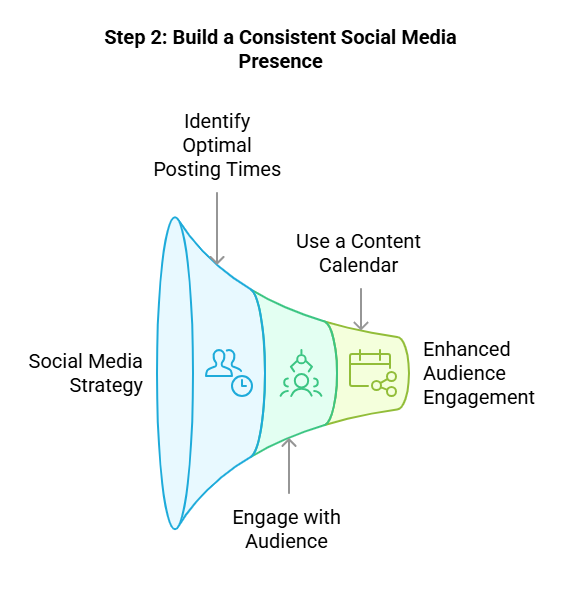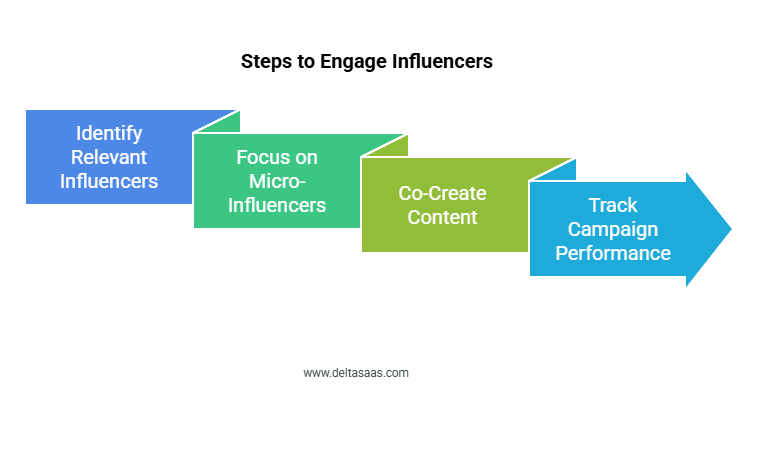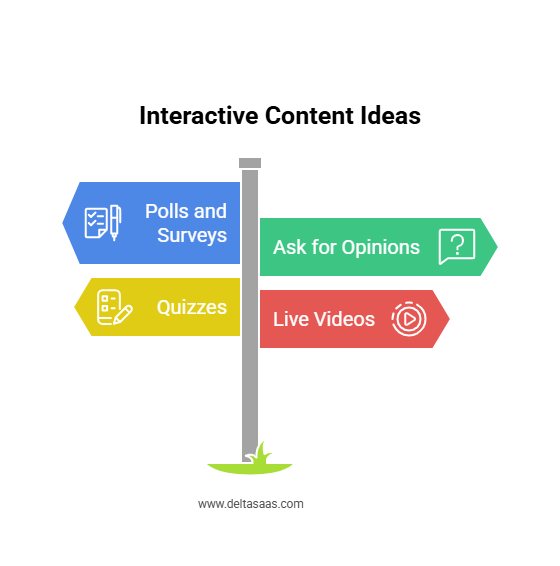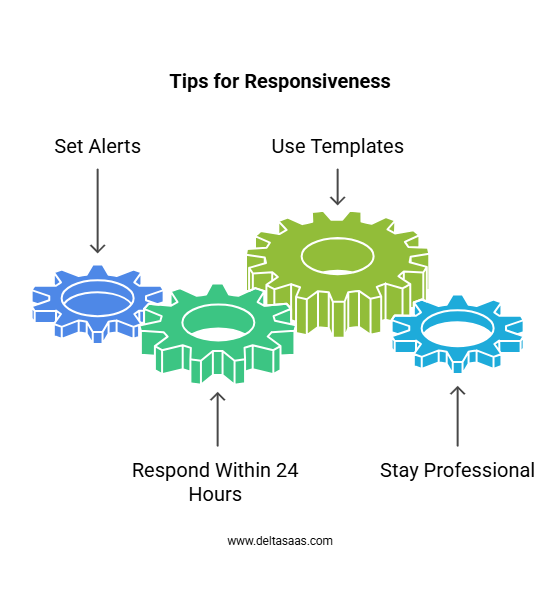Social Media Engagement Strategies: Boosting Customer Interaction
Social media has become a powerful tool for customer engagement, brand building, and lead generation. However, being active on platforms like Facebook, Instagram, and Twitter isn’t enough. Businesses and organizations need effective social media engagement strategies to stand out and build meaningful connections.
This guide will provide actionable steps to help you increase engagement, improve brand awareness, and build lasting relationships with your followers. Whether running a marketing campaign, managing a nonprofit, or growing a small business, these strategies will help you create a vibrant online community.

Why Social Media Engagement Matters
Social media engagement goes beyond likes, shares, and comments. It’s about fostering meaningful connections with your audience and encouraging two-way communication.

Key Benefits of High Engagement:
- Improved Brand Awareness: Engaged users are likelier to share your content, increasing your reach.
- Stronger Customer Relationships: Responding to comments and messages builds trust and loyalty.
- Lead Generation: Higher engagement drives more clicks to your website, converting followers into customers.
- Increased Algorithm Favorability: Platforms prioritize content with higher engagement, making your posts more visible.
For example, Sprout Social reports that businesses with higher engagement rates experience more excellent customer retention and satisfaction.
If you’re looking for the best software, check out Delta SaaS, which offers discounts and lifetime deals on SaaS products.

Step 1: Create Engaging Content
The foundation of any social media strategy lies in crafting compelling and interactive content that resonates with your audience.
Know Your Audience
Understanding your audience’s preferences is crucial. Identify who they are, what they value, and how they interact with your brand.
Tips for Knowing Your Audience:
- Use platform analytics to gather demographic data.
- Research their interests and pain points.
- Analyze the types of content they engage with the most.
For instance, if you’re targeting Gen Z on Instagram, focus on short, visually appealing content like Reels and Stories.
Read More: Effective Online Advertising Strategies for High ROI
Post Compelling Content
Your content needs to stand out in crowded feeds to capture attention. Focus on creativity, relevance, and quality.
Ideas for Compelling Content:
- Multimedia Content: Use images, videos, and GIFs to make your posts visually appealing.
- User-Generated Content (UGC): Share posts from your followers to build community and trust.
- Live Videos: Host live Q&A sessions, product launches, or behind-the-scenes glimpses.
- Educational Posts: Share tips, tutorials, or industry insights to provide value.
For example, a fitness brand could post a video demonstrating quick home workouts with a motivational caption and a CTA to “try it today.”
Also Read,
Feedbeo Lifetime Deal – Get Lifetime Access Under $19
Get Minimarks Lifetime Deal: Simplify Bookmarks
NodeLand Lifetime Deal – Maximize Project Efficiency
Stepsy Lifetime Deal – Save Big on Workflow Automation
Agiled Lifetime Deal: Simplify Business Management Today
Apipheny Lifetime Deal – Simplify API Integration
Utilize Hashtags
Hashtags help expand your reach by categorizing your content for specific audiences.
Best Practices for Using Hashtags:
- Use a mix of popular, niche, and branded hashtags.
- Limit hashtags to 5–10 per post to avoid overwhelming the audience.
- Research trending hashtags relevant to your industry.
For instance, a travel company might use hashtags like #TravelTips, #Wanderlust, and #ExploreMore to attract travel enthusiasts.
Create Shareable and Interactive Content
Encourage followers to engage with your posts by making them fun, valuable, and easy to share.
Examples of Interactive Content:
- Polls and Quizzes: Use Instagram Stories or Twitter to ask questions and collect opinions.
- Contests and Giveaways: Reward followers for tagging friends, sharing your post, or participating in a challenge.
- Ask Questions: Spark conversations by asking your audience for their thoughts or preferences.
- Incorporate Emojis: Emojis can make your captions more relatable and engaging.
For example, a restaurant could host a “Guess the Dish” contest, asking followers to identify meals from blurred images.
Read More: Tips for Improving Marketing ROI with Delta SaaS

Step 2: Build a Consistent Social Media Presence
Consistency is key to maintaining and growing engagement over time. Your followers should know what to expect from your brand and feel encouraged to interact regularly.
Post at Optimal Times
The timing of your posts significantly impacts their visibility and engagement.
How to Identify Optimal Posting Times:
- Use social media insights to analyze when your audience is most active.
- Experiment with different posting schedules and track engagement metrics.
- Refer to general guidelines (e.g., post on Instagram during lunch breaks or evenings).
Engage With Your Audience
Building relationships requires consistent interaction. Don’t just post content—actively engage with your followers.
Tips for Active Engagement:
- Respond Quickly: Promptly answer comments, direct messages, and mentions to show you value your audience.
- Validate Your Audience: Acknowledge their opinions and thank them for their contributions.
- Start Conversations: Pose open-ended questions that invite thoughtful responses.
- Join Community Groups: Participate in relevant Facebook Groups or LinkedIn discussions to expand your reach.
For example, a nonprofit organization might host weekly discussions on its Facebook group to raise awareness and encourage community participation.
Read More: Best Practices to Improve Online Business Growth
Use a Content Calendar
A content calendar helps you plan, organize, and post consistently.
Benefits of a Content Calendar:
- Ensures regular posting without scrambling for last-minute ideas.
- Align content with your marketing campaigns and business goals.
- It makes it easier to track and analyze engagement over time.

Step 3: Leverage Analytics and Advanced Engagement Strategies
Once you’ve established a consistent presence and built a library of engaging content, you can optimize your strategy by analyzing data and implementing more advanced tactics.
Track Engagement Metrics
Analyzing engagement metrics helps you understand what works and what doesn’t. Use data to refine your strategy and maximize results.
Key Social Media Metrics to Track:
- Likes and Comments: Measure essential engagement with your posts.
- Shares and Saves: These indicate content that resonates strongly with your audience.
- Click-Through Rate (CTR): Tracks how many users visit your website or landing pages via social media.
- Reach and Impressions: This shows how many people saw your content and how often it appeared in their feeds.
- Follower Growth Rate: Indicates whether your content is helping you grow your audience.
Tools to Analyze Engagement:
- Sprout Social: Offers in-depth analytics and social listening tools.
- Instagram Insights and Facebook Analytics: Provide platform-specific performance metrics.
- Google Analytics: Tracks traffic coming to your website from social media.
Example: A fashion brand might notice that carousel posts featuring styling tips get more shares than product-only posts. They can use this insight to create more educational content.
Read More: How to Be Successful in Digital Marketing?
Incorporate Influencer Marketing
Partnering with influencers is an excellent way to boost social media engagement. Influencers have loyal audiences, making their recommendations highly trusted.

Steps to Engage Influencers:
- Identify Relevant Influencers: Look for influencers whose followers align with your target audience.
- Focus on Micro-Influencers: These influencers often have higher engagement rates and are more affordable than celebrities.
- Co-Create Content: Collaborate on posts, Stories, or videos highlighting your products or services.
- Track Campaign Performance: Use unique discount codes or affiliate links to measure results.
Example: A beauty brand could collaborate with influencers to share tutorials using their products, tag the brand, and encourage followers to engage with the post.

Organize Contests and Giveaways
Contests and giveaways are the most effective ways to increase engagement, attract new followers, and strengthen customer loyalty.

How to Run a Successful Giveaway:
- Set Clear Goals: Define what you want to achieve, such as more followers, email signups, or brand awareness.
- Create Simple Rules: Keep participation easy, such as following your account, tagging friends, or sharing a post.
- Offer Relevant Prizes: Choose prizes that align with your audience’s interests and brand.
- Promote the Contest: Use Stories, posts, and paid ads to maximize visibility.
For example, a digital planner brand could organize a giveaway offering free planners in exchange for followers tagging two friends and sharing the post.
Read More: How Do You Grow Your Business? Strategies for Sustainable Growth
Use Interactive Features
Interactive content invites users to participate, making them more likely to engage. Social media platforms offer numerous features to boost interactivity.

Interactive Content Ideas:
- Polls and Surveys: Use Instagram Stories or Twitter to gather audience preferences.
- Ask for Opinions: Post open-ended questions to spark discussions in the comments.
- Quizzes: Share fun or educational quizzes related to your niche.
- Live Videos: Host live sessions to answer questions, make announcements, or give behind-the-scenes insights.
Example: A nonprofit organization could host an Instagram Live event to discuss its mission, encourage donations, and answer viewers’ questions.
Curate and Share User-Generated Content
User-generated content (UGC) is content your customers or followers create that features your brand. Sharing UGC builds trust, encourages community involvement, and provides fresh content for your platforms.
Benefits of UGC:
- Builds credibility as it comes directly from customers.
- Strengthen the community by highlighting your followers.
- Saves time on content creation.
How to Encourage UGC:
- Create Branded Hashtags: Encourage customers to tag your brand or use specific hashtags.
- Feature Followers: Share photos or videos of your customers using your products or services.
- Run Photo Contests: Ask customers to submit images for a chance to win a prize.
For example, a coffee shop could encourage followers to post photos of their drinks with the hashtag #CoffeeWithMe and reshare the best entries.
Post at Optimal Times
Even the best content will not perform well if your audience cannot see it online. Posting at the correct times ensures maximum visibility and engagement.
How to Find the Best Posting Times:
- Analyze Your Audience: Use tools like Instagram Insights or Sprout Social to see when your followers are most active.
- Experiment: Post at different times and track which posts get the most engagement.
- Consider Time Zones: If you have a global audience, schedule posts to reach different regions effectively.
Read More: Grow Digital Business with Smart Strategies
Develop a Responsive Social Media Team
A responsive social media team ensures that comments, messages, and mentions are answered promptly. Speed and attentiveness can significantly impact how your audience perceives your brand.

Tips for Responsiveness:
- Set Alerts: Use tools like Hootsuite or Sprout Social to get real-time notifications of interactions.
- Please respond Within 24 Hours: A quick reply shows customers you care about their inquiries.
- Use Templates: Create pre-written responses for common questions to save time.
- Stay Professional: When handling complaints, maintain a positive and professional tone.
For example, a nonprofit organization that responds quickly to donation inquiries shows its dedication to transparency and building trust.
Build an Engagement Framework
A well-structured engagement framework helps you maintain consistency and ensures that your efforts align with your overall marketing strategy.
How to Create an Engagement Framework:
- Set Goals: Define what you want to achieve, such as higher engagement rates, more website clicks, or increased brand awareness.
- Define Metrics: Identify KPIs you’ll track, such as CTR, comments, or follower growth.
- Assign Roles: Designate team members for tasks like content creation, comment replies, or analytics tracking.
- Plan Ahead: Use a content calendar to align engagement activities with your broader campaigns.
Read More: Tips for Engaging Potential Customers Online
Conclusion
Creating a successful social media engagement strategy requires effort, creativity, and consistency. From crafting interactive content to leveraging tools like Sprout Social for analytics, every step should aim to build meaningful connections with your audience. Whether running a marketing campaign, managing a nonprofit, or promoting a small business, these strategies will help you grow your presence, drive engagement, and achieve your goals.
Start implementing these tips today to build a thriving online community and elevate your brand’s social media performance!
FAQs About Social Media Engagement Strategies
What are the 7 C’s of social media strategy?
The 7 C’s include Content, Context, Community, Communication, Connection, Consistency, and Conversion.
How can I increase engagement on social media?
Post consistently, use interactive features like polls, respond quickly, and share user-generated content.
What is the best way to make social media posts engaging?
Create visually appealing content, ask questions, use hashtags, and include strong CTAs.
What is the 5-5-5 social media strategy?
This involves posting five engaging pieces of content, commenting on five followers’ posts, and liking five more to boost interaction.
How can nonprofits increase engagement on social media?
Nonprofits can increase engagement by sharing impactful stories, hosting live events, and encouraging followers to participate in campaigns.
Why is social media engagement important?
It builds stronger relationships with your audience, increases brand awareness, and drives website traffic.
How do hashtags help with engagement?
Hashtags categorize your content, making it discoverable by users searching for related topics.
How can influencers boost social media engagement?
Influencers bring loyal followers and high credibility, making your brand more appealing to their audience.
What metrics should I track to measure engagement?
Track likes, comments, shares, CTR, reach, impressions, and follower growth rates.
How often should I post to maintain engagement?
Post regularly, but focus on quality over quantity. For most platforms, 3–5 times per week is effective.

